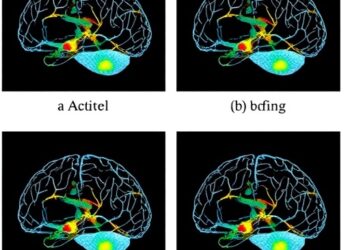TLS are accumulations of lymphoid cells that share similar cellular compartments, organization, and function as secondary lymphoid organs. Importantly, the presence of these structures in inflamed salivary glands associated with active disease, increased autoantibody production, and malignancy risk.
TLS are accumulations of lymphoid cells that share similar cellular compartments, organization, and function as secondary lymphoid organs. Importantly, the presence of these structures in inflamed salivary glands associated with active disease, increased autoantibody production, and malignancy risk.
“To treat patients effectively, comprehensive understanding of the salivary gland microenvironment is needed”, said Saba Nayar, “but current profiling efforts often struggle to capture high-plex ‘omics data while preserving the spatial architecture of the tissue.”
To address this, the team mapped both identified cell types and novel populations, clustering tissue architectural features to define eight so-called neighbourhoods. Some of these were enriched with epithelial cells, but others were associated with different immune cell populations. One neighbourhood was enriched with IgA plasma cells, and was associated with myeloid populations – in contrast to other IgG plasma cells niches. This novel spatial mapping work – presented in a basic abstract session on new pathways in Sjögren’s disease – has the potential to reveal novel cellular landscape and their interactions, aiding therapeutic and discoveries for the management of Sjögren’s disease.
A second abstract focused on SGEC, which are already known to play a pathogenic role in Sjögren’s disease. Research is underway to develop and characterise differentiated organoids of SGEC derived from minor salivary gland biopsies of both patients and sicca controls. Organoids were shown to form and differentiate in both groups, with comparable self-renewal capacity of organoids for long-term culture. The organoids expressed epithelial ductal and acinar markers and recapitulated the epithelial diversity. Exposure to pilocarpine induced increased calcium levels – suggesting a capacity to secrete saliva in response to a cholinergic stimulation – but this effect was reduced in organoids derived from Sjögren’s patients compared to controls.
In conclusion, Loïc Meudec said “additional characterisation investigations are ongoing to develop immuno-organoids that can be used to study the crosstalk between epithelial cells and immune cells and to test the effect of drugs on this crosstalk.”
Drug development for Sjögren’s disease has predominantly focused on suppressing aberrant immune cells, but this approach has not shown efficacy in clinical studies, and there are no approved biologic therapies that directly target the underlying pathogenesis. Comprehensive understanding of the salivary gland may help change this picture in the future.
Source
Nayar S, et al. Spatial insights into the salivary glands of patients with Sjogren’s Disease
Fibroblasts, Cytokines and Chemokines, ‘-omics. Presented at EULAR 2024; OP0199.
Ann Rheum Dis 2024; DOI: 10.1136/annrheumdis-2024-eular.5434.
Meudec L, et al. Development of salivary gland organoids to study Sjögren’s disease. Presented at EULAR 2024; OP0199.
Ann Rheum Dis 2024; DOI: 10.1136/annrheumdis-2024-eular.1959.
About EULAR
EULAR is the European umbrella organisation representing scientific societies, health professional associations and organisations for people with rheumatic and musculoskeletal diseases (RMDs). EULAR aims to reduce the impact of RMDs on individuals and society, as well as improve RMD treatments, prevention, and rehabilitation. To this end, EULAR fosters excellence in rheumatology education and research, promotes the translation of research advances into daily care, and advocates for the recognition of the needs of those living with RMDs by EU institutions.
Contact
EULAR Communications, communications@eular.org
Notes to Editors




